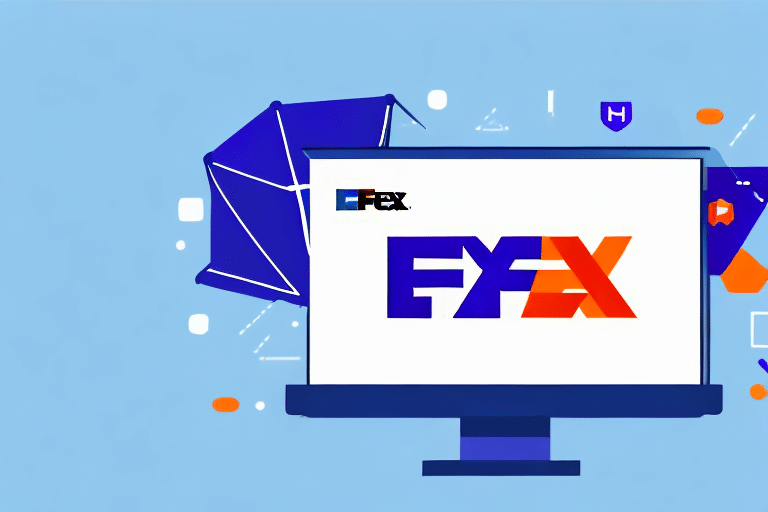The Importance of Shipping Software for Businesses
In today's competitive market, efficient shipping processes are crucial for business success. Shipping software plays a pivotal role in managing and optimizing these processes, significantly impacting a company's bottom line. By automating tasks such as tracking packages, generating labels, and managing shipments, businesses can reduce errors and accelerate shipping times, leading to cost savings and enhanced customer satisfaction.
According to a Statista report, companies that implement advanced shipping software experience up to a 25% increase in operational efficiency. Additionally, real-time visibility into the supply chain allows businesses to monitor inventory levels and the movement of goods, enabling them to optimize operations, minimize waste, and improve overall efficiency.
Integration capabilities with other business systems, such as accounting and inventory management software, provide a seamless end-to-end solution. In the fast-paced business environment of today, shipping software is not merely a luxury but a necessity for companies aiming to stay competitive and meet evolving customer expectations.
Understanding FedEx Ship Manager Ursa
FedEx Ship Manager Ursa is a comprehensive shipping software application designed to streamline the shipping processes for businesses. It offers features like printing shipping labels, tracking and scheduling deliveries, and generating customs documents seamlessly. The application provides real-time updates on shipping status and allows businesses to access and analyze shipment data for informed decision-making.
Key Features of FedEx Ship Manager Ursa
- Label Printing: Easily generate and print shipping labels directly from the platform.
- Shipment Tracking: Monitor the status of shipments in real-time to ensure timely deliveries.
- Customs Documentation: Automatically generate necessary customs documents for international shipments.
- System Integration: Integrates with various e-commerce platforms and warehouse management systems for a streamlined workflow.
However, as businesses evolve, the need for more advanced features and integrations becomes apparent, leading to the exploration of alternative shipping solutions.
Consequences of FedEx Ship Manager Ursa Expiration
When FedEx Ship Manager Ursa expires, businesses lose access to its suite of shipping services. This can disrupt shipping and tracking label generation, hinder shipment status updates, and limit access to critical data necessary for analyzing and optimizing shipping processes. According to Forbes, transitioning to a more advanced shipping solution is essential to maintain operational efficiency and avoid disruptions.
Impact of Expiration on Business Operations
The expiration of FedEx Ship Manager Ursa can adversely affect businesses in multiple ways:
Increased Manual Work
Without the software, employees may need to revert to manual processes for packing, labeling, and tracking shipments. This not only consumes more time but also increases the likelihood of errors and delays.
Higher Operational Costs
Transitioning to a new shipping solution can incur costs related to software purchase, implementation, and employee training. Additionally, temporary disruptions during the transition period can affect productivity.
Decreased Customer Satisfaction
Manual processes are prone to inaccuracies, leading to incorrect shipping information, delayed deliveries, and lost packages. According to a Journal of Commerce study, such issues can result in decreased customer satisfaction and harm a business's reputation.
Alternative Shipping Software Solutions
Several robust alternatives to FedEx Ship Manager Ursa are available to help businesses manage their shipping needs effectively:
ShipStation
ShipStation is a popular choice for businesses managing multiple carriers. It integrates with over 40 shipping carriers, including FedEx, UPS, and USPS, and offers features like automated order importing, batch label printing, and customizable packing slips.
Shippo
Shippo provides a user-friendly interface and competitive pricing. It integrates with major e-commerce platforms such as Etsy and WooCommerce, allowing businesses to compare rates from multiple carriers to find the most cost-effective shipping options.
Ordoro
Ordoro offers comprehensive shipping solutions with features like inventory management, order tracking, and dropshipping support. It is ideal for businesses looking to streamline their entire supply chain process.
EasyShip
EasyShip provides global shipping solutions with access to over 250 shipping options and real-time rates. It is particularly beneficial for businesses engaged in international shipping, offering tools to manage customs documentation and duties seamlessly.
Exploring Other Shipping Software Options
Beyond the aforementioned alternatives, there are additional shipping software options tailored to specific business needs:
FedEx Advanced Shipping Tools
FedEx offers a range of advanced shipping tools that provide enhanced tracking, analytics, and integration capabilities, suitable for larger businesses with complex shipping requirements.
Stamps.com
Stamps.com is ideal for small to medium-sized businesses, offering affordable shipping solutions with easy integration to platforms like eBay and Amazon.
AfterShip
AfterShip focuses on post-purchase processes, providing advanced tracking and customer notification features to improve the overall shipping experience.
Choosing the right shipping software requires careful consideration of your business’s specific needs, including shipping volume, destinations, and integration requirements.
Choosing the Right Shipping Software for Your Business
Selecting the appropriate shipping software is critical to ensuring efficient and cost-effective shipping operations. Here are key factors to consider:
Functionality and Features
Assess whether the software offers essential features like label printing, tracking, rate comparison, and integration with your existing systems.
Integration Capabilities
Ensure the software seamlessly integrates with your e-commerce platforms, inventory management systems, and other business tools to streamline operations.
Pricing and Scalability
Evaluate the pricing structure to ensure it fits within your budget. Additionally, consider whether the software can scale with your business as it grows.
Ease of Use
The software should be user-friendly, minimizing the learning curve for your team and facilitating quick adoption.
Customer Support
Opt for vendors that offer comprehensive customer support, including multiple channels like phone, email, and live chat, as well as extensive online resources.
Cost Implications of Switching Shipping Software
Transitioning to a new shipping software solution involves several cost considerations:
Initial Investment
Costs may include purchasing the software, implementation fees, and potential hardware upgrades.
Training and Onboarding
Training employees to effectively use the new software can incur additional expenses, both in terms of time and resources.
Operational Disruptions
During the transition period, businesses might experience temporary disruptions that could affect productivity and shipping timelines.
However, these costs must be weighed against the long-term benefits of improved efficiency, accuracy, and customer satisfaction. Investing in advanced shipping software can lead to significant cost savings by reducing errors, minimizing delays, and enhancing overall operational effectiveness.
Benefits of Upgrading to Advanced Shipping Software
Upgrading to a more advanced shipping software solution offers numerous benefits:
- Increased Efficiency: Automation of routine tasks reduces manual workload and speeds up shipping processes.
- Faster Shipping Times: Streamlined operations lead to quicker order fulfillment and delivery.
- Reduced Errors: Automated label generation and tracking minimize the risk of mistakes.
- Improved Customer Satisfaction: Accurate and timely deliveries enhance the customer experience.
- Detailed Insights: Advanced analytics provide valuable data for optimizing business strategies.
Moreover, advanced shipping software often includes enhanced tracking and monitoring capabilities, allowing businesses to proactively address potential issues before they escalate. Integration with other business systems further streamlines operations, contributing to overall organizational efficiency.
Best Practices for Transitioning to a New Shipping Software
To ensure a smooth transition to a new shipping software system, businesses should adhere to the following best practices:
Comprehensive Research
Thoroughly explore available software options to identify the one that best fits your business requirements.
Implementation Planning
Develop a detailed implementation plan that outlines each step of the transition process, including timelines and responsibilities.
Employee Training
Provide adequate training and resources to ensure that employees are comfortable and proficient with the new software.
Data Migration
Ensure that all necessary data is accurately migrated to the new system, minimizing the risk of data loss or inconsistencies.
Testing
Conduct thorough testing of the new software to identify and resolve any potential issues before full-scale deployment.
By following these best practices, businesses can minimize disruptions, ensure data integrity, and facilitate a seamless transition to their new shipping software system.
Optimizing Your Shipping Process with the Right Software
Implementing the right shipping software is just the first step. To fully optimize your shipping process, consider the following strategies:
Regular Performance Analysis
Conduct periodic reviews of your shipping operations to identify areas for improvement and ensure that the software is being utilized effectively.
Integration with E-commerce Platforms
Ensure that your shipping software is seamlessly integrated with your e-commerce platforms to streamline order management and fulfillment.
Utilize Automation Features
Leverage the automation capabilities of your shipping software to handle repetitive tasks, reducing manual effort and minimizing errors.
Clear Communication Channels
Establish strong communication channels with your shipping carriers to facilitate timely updates and quick resolution of any issues.
Regular Policy Reviews
Periodically review and update your shipping policies and procedures to align with your business goals and customer expectations.
By consistently optimizing your shipping process, you can enhance efficiency, reduce costs, and improve the overall customer experience.
The Future of Shipping Technology and Its Implications for Businesses
The shipping industry is rapidly evolving, driven by advancements in technology such as automation, artificial intelligence (AI), and robotics. These innovations are set to revolutionize shipping operations by:
- Automating Fulfillment: Robotics and AI can automate the entire fulfillment process, from picking and packing to labeling and shipping.
- Enhancing Speed and Accuracy: Advanced algorithms and machine learning can optimize shipping routes and improve delivery accuracy.
- Minimizing Human Errors: Automation reduces the reliance on manual processes, thereby decreasing the likelihood of errors.
According to a McKinsey report, the adoption of AI and robotics in shipping could increase operational efficiency by up to 30% over the next decade. For businesses, staying abreast of these technological advancements is essential to maintain a competitive edge and meet the increasing demands of customers.
Embracing the future of shipping technology means investing in advanced shipping software that can integrate these innovations, providing businesses with the tools they need to thrive in an increasingly automated and data-driven landscape.
In conclusion, as FedEx Ship Manager Ursa reaches its end of life, businesses must proactively seek alternative shipping solutions to maintain and enhance their shipping operations. By selecting the right software, planning the transition carefully, and continuously optimizing shipping processes, businesses can achieve greater efficiency, cost savings, and customer satisfaction.






















